Research Outcomes: Inspiring Hope
Our St. Baldrick’s Foundation Research Outcomes blogs highlight examples of the progress your donations are supporting. This quarterly edition focuses on promising new treatments for two types of pediatric sarcoma, protecting kids’ brains while treating brain tumors, and the ease of treating retinoblastoma with chemotherapy.
Thank you for making this research possible.
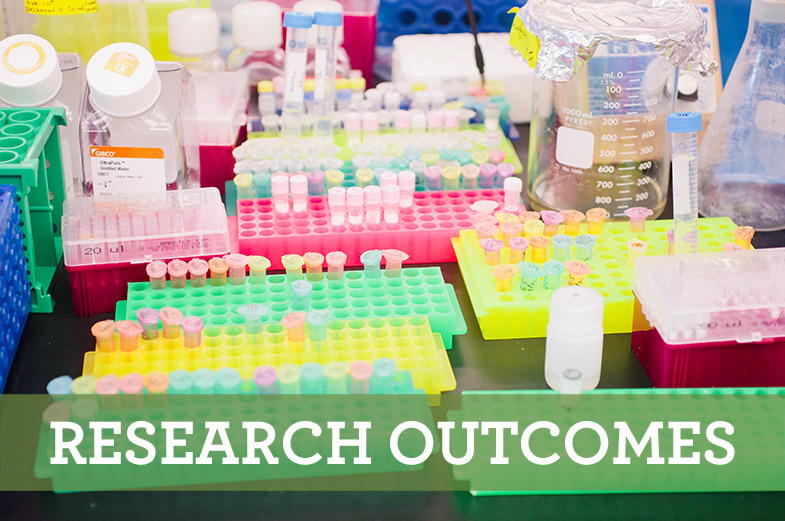
Protecting Kids’ Brains During Radiotherapy Treatment
Radiation therapy is commonly used to treat central nervous system (CNS) tumors in children and adults. While radiation therapy doesn’t usually harm the brains of adults, it can cause serious problems for kids. St. Baldrick’s funded researcher, Dr. Kristopher Sarosiek and colleagues discovered that the younger the patient, the more damage the radiation does to their brain. Additionally, they discovered that radiation triggers a process that leads to brain cells dying in kids but not adults. Digging further, they identified a specific protein called BAX that is responsible for this cell death. When they blocked BAX, it prevented brain cells from dying in models. This finding could lead to new ways to protect kids’ brains while undergoing radiation therapy.
This grant is named for the Making Headway Foundation whose mission for the past 20 years has been to provide care and comfort for children with brain and spinal cord tumors through a continuum of services and programs while also funding medical research for cures.
A Promising New Target for Ewing Sarcoma
Ewing sarcoma is an aggressive pediatric bone or soft tissue cancer. Unfortunately, current treatments are not very effective, especially when the cancer has spread or doesn’t respond to treatment. To discover better treatment options for kids with Ewing sarcoma, Dr. Poul Sorensen and colleagues are studying proteins on the surface of Ewing sarcoma cells.
They discovered a new protein not previously known to be associated with this cancer. This protein, called ENPP1, is found only in Ewing sarcoma and not in normal tissues. Because the protein is only in Ewing sarcoma cancer cells it makes for a promising target because therapies could potentially find this protein, leaving normal tissues alone. The researchers are hopeful this will open the door to new immunotherapy treatments for Ewing sarcoma.
This St. Baldrick’s Martha’s BEST Grant for All is funded through an anonymous $1 million donation aimed at developing new treatments for Ewing sarcoma, an aggressive bone and soft tissue cancer in children and young adults. This grant is named for a special teenager who passed away from Ewing sarcoma.
New CAR T-Cell Therapy Eliminates Rhabdomyosarcoma
Rhabdomyosarcoma is the most common soft tissue sarcoma affecting kids. A recent study from the St. Baldrick’s Foundation EPICC Team (Empowering Pediatric Immunotherapies for Childhood Cancer) showed that CAR T-cell therapy effectively eliminated the vast majority of rhabdomyosarcoma tumors in models in a matter of weeks.
CAR T-cell therapy is a type of immunotherapy that involves taking cancer-fighting immune cells, called T cells, from a patient and modifying them to target a specific protein found on the surface of cancer cells. The modified T cells are then injected back into the patient, with a boosted ability to fight cancer. Next steps will move this therapy into humans in a phase I clinical trial. “We have a great deal of work ahead, but the hope is that this therapy is going to work for people with this type of cancer that has been unresponsive to other treatments,” says lead investigator Dr. Javed Khan.
Chemotherapy for Retinoblastoma, A Feasibility Study
Retinoblastoma is the most common type of eye cancer in kids. Delivering chemotherapy directly into the eye as a treatment to save the eye in kids with advanced retinoblastoma is used more and more, based on internationally reported success mainly through retrospective studies. To study the feasibility of this treatment (how easily it can be provided) with St. Baldrick’s Support, the Children’ Oncology Group (COG) initiated a clinical trial at 9 institutions. Findings showed it is not feasible due to trouble accessing the appropriate location in the eye to deliver the medicine in some patients. These results do not mean the treatment is not effective, but suggest doctors use caution when considering this treatment to acknowledge the difficulty of delivering the chemotherapy, and invest in specialized training in order to make the treatment easier to administer. Feasibility studies are important to ensure the best treatments are available for kids with cancer.
Not every publication of research supported by St. Baldrick’s makes the news, but each one adds to the body of scientific knowledge that takes us one step closer to better outcomes for kids with cancer. Your continued support will make more research possible to Conquer Kids’ Cancer.
Donate now and help support research into better treatments for kids with cancer.
Read more on the St. Baldrick’s blog:
Research Outcomes: Unveiling Hope
Our St. Baldrick’s Foundation Research Outcomes blogs highlight examples of the progress your donations are supporting. This quarterly edition focuses on understanding how rhabdomyosarcoma grows, using immunotherapy to treat pediatric brain tumors and relapsed neuroblastoma, as well as research to understand the experiences of adolescents and young adults being treated for advanced pediatric cancer.
Thank you for making research – and hope — possible.

What Is Sarcoma?
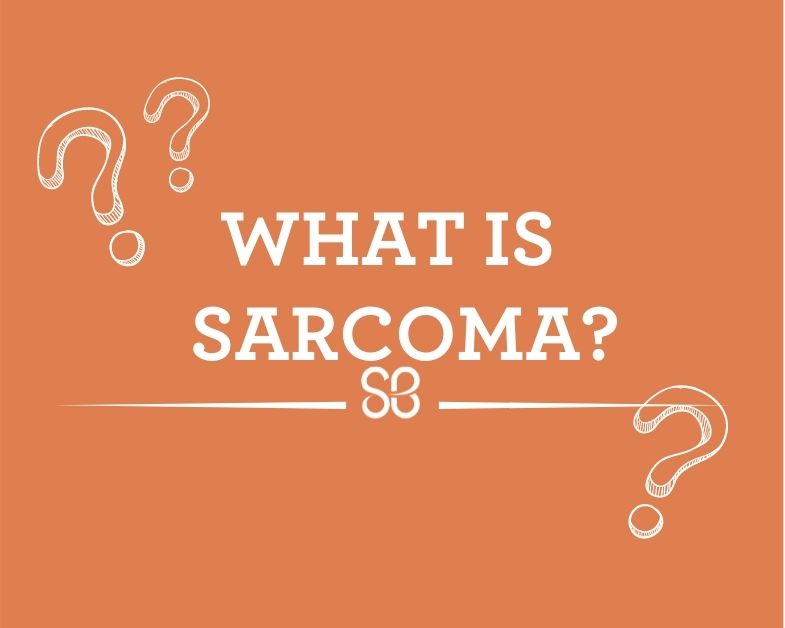
What are childhood sarcomas?
A sarcoma is a tumor that grows in the bone or soft tissue (muscles, nerves and fat) anywhere in the body. Sarcomas are rare, especially in young children, accounting for less than 15% of childhood cancers.
Pediatric sarcomas are classified into two major categories: bone sarcomas and soft tissue sarcomas.
Bone sarcomas can appear in any bone, but are most often seen in the leg, arm, pelvis or rib. The most common bone sarcomas are Ewing sarcoma and osteosarcoma.
Soft-tissue sarcomas can occur in any soft tissue, anywhere in the body. The most common soft-tissue sarcomas are embryonal rhabdomyosarcoma and alveolar rhabdomyosarcoma.
Within these two umbrella categories, there are many different types of sarcomas that can develop in children.
Sarcomas can start off being tiny lumps that you can’t feel. They can spread through the body, or metastasize, before they grow big enough to be seen.
Research Outcomes: Fighting Cancer & Helping Survivors
This quarterly edition of the St. Baldrick’s Foundation Research Outcomes features work focused on fighting neuroblastoma, rhabdomyosarcoma, and acute lymphoblastic leukemia as well as research to improve identification of survivors at risk for cardiotoxicity.
Thank you for making these outcomes – and more – possible.

Meet the RED Sparkle Octopus Crusaders & Their Inspiration
by David Gosser, team captain and dad
The RED Sparkle Octopus Crusaders (RSOC) Team honors four children – Nina, Tommy, Amaya, and Kristina – who met in 2005, while in treatment at the Children’s Hospital of the King’s Daughters (CHKD) in Norfolk, Virginia. They started shaving individually in 2005/06 and formed the original team in 2009; this version came together in 2014. Other families affected by childhood cancer and dozens of good friends have joined the team’s efforts over the years. Since inception, the RSOC have raised over $380,000 for the St. Baldrick’s Foundation. They remain fully committed to funding research to create cures, united by the hope that they are helping other kids and families find better outcomes. The team’s name is a combined tribute to the memories of the four Angels.
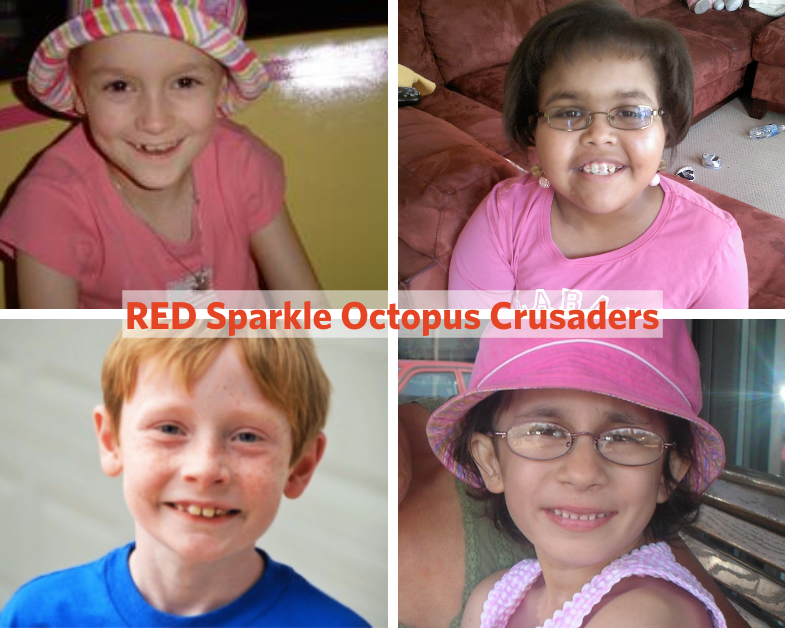
Volunteer Spotlight: Richard Kligler
What Happens When “Do What You Want” Becomes “Ladies’ Night” for 800 Women?
It started as a lot of St. Baldrick’s Foundation events do: a few people getting together at the local spot to shave heads and help raise money for pediatric cancer research. After seeing volunteers participate, Terry Binkely-Paterno wanted to get involved in a different way.
And for very good reason, as her nephew, Aiden, had been diagnosed with rhabdomyosarcoma in July of 2008. Wanting to take action, Terry and her mothers’ group – the Wednesday Mothers Club – decided to host a bake sale and contribute the proceeds.
 Terry (third from left) and other Ladies’ Night committee members.
Terry (third from left) and other Ladies’ Night committee members.
Childhood Cancer Survivor Goes From Cancer Free to College Grad
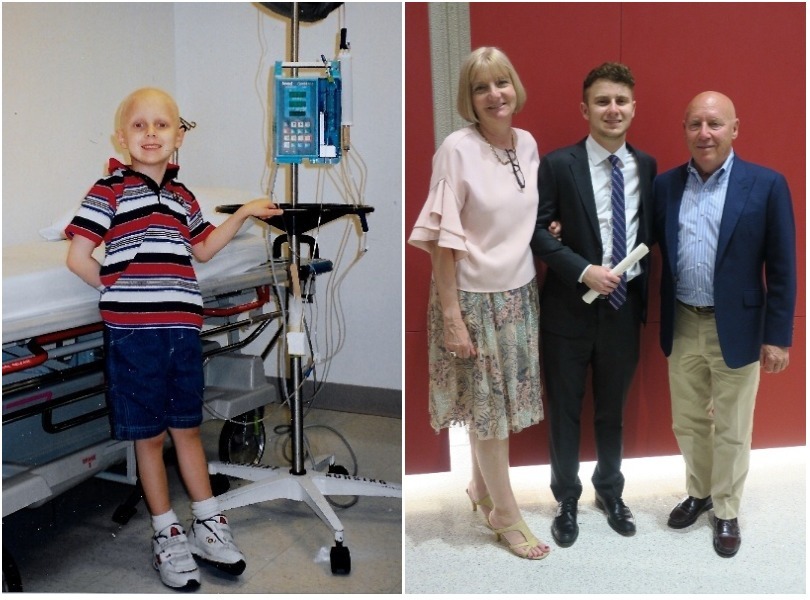
(Left) Sean in treatment at Memorial Sloan Kettering Cancer Center in New York. (Right) Sean with his mom, Marcia, and dad, Richard, during his graduation from Indiana University.
Honored Kid Sean Kligler graduated from college in May. The day was a tangle of emotions – happiness and sadness both.
“At graduation, I was happy — all those years of schooling finally paid off. I was able to get a college degree,” he said. “Of course, I was sad as well. I really enjoyed my time in college and I made some really good friends along the way.”
But there was another emotion mixed into that bittersweet day. It was gratitude. That’s because when Sean was 5 years old, he was diagnosed with childhood cancer. And when you have cancer, surviving to graduate college, or even attend college, is anything but guaranteed.
Tom & Keira: Fighting Fires and Childhood Cancer Together
When Tom agreed to shave his head for the first time, he was simply doing it to help fund childhood cancer research. Then, Tom met Honored Kid Keira, and his decision to shave for St. Baldrick’s took on a whole new meaning.
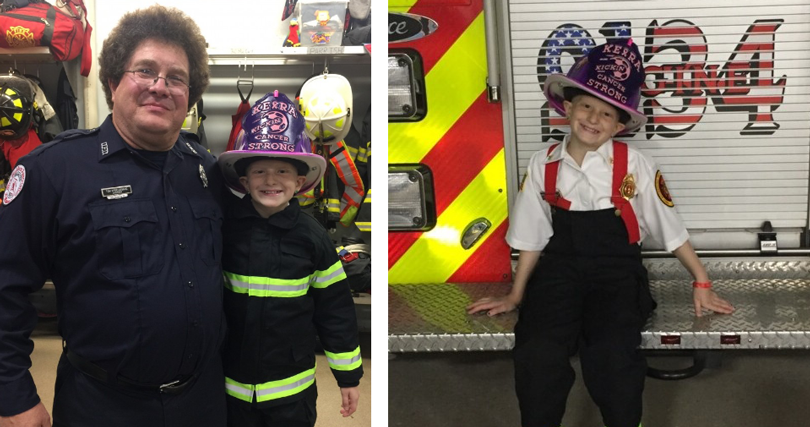
Honored Kid and Honorary Firefighter Keira poses with her custom-made helmet at the O’Fallon fire station.
Tom is a local firefighter in O’Fallon, Missouri. Keira is an 11-year-old girl currently undergoing treatment for a type of childhood cancer called rhabdomyosarcoma.
And the two of them are the best of friends.
What Is Proton Therapy?

Dr. Ralph Ermoian is a radiation oncologist and St. Baldrick’s infrastructure grant recipient at the University of Washington. He explains what proton therapy is, how it works, and how this treatment is helping kids and adults with cancer.
What is proton therapy?
Proton therapy is a type of radiation used commonly for children with cancer. Like traditional x-ray radiation, it is used to treat cancers, but proton therapy affects less of the healthy tissue surrounding the tumor.
Older Posts »

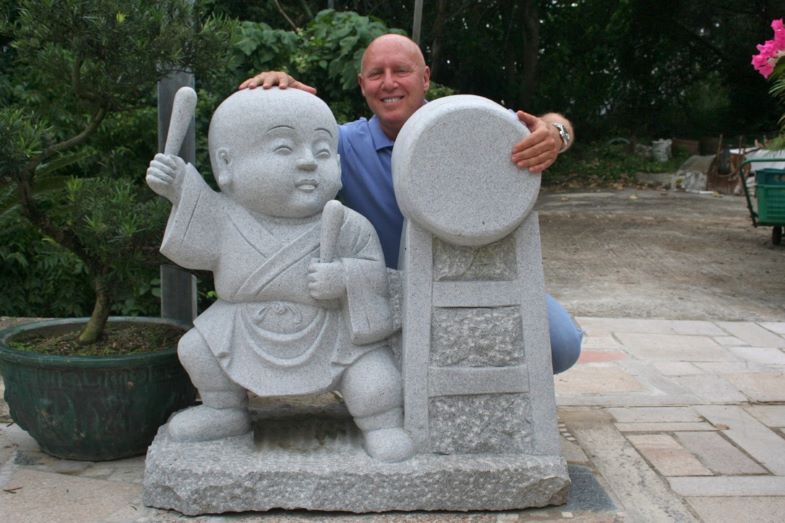
 SBF
Tweets »
SBF
Tweets »